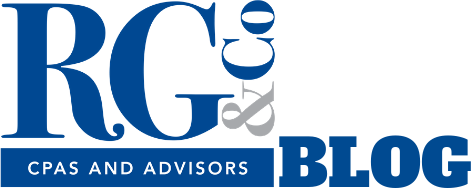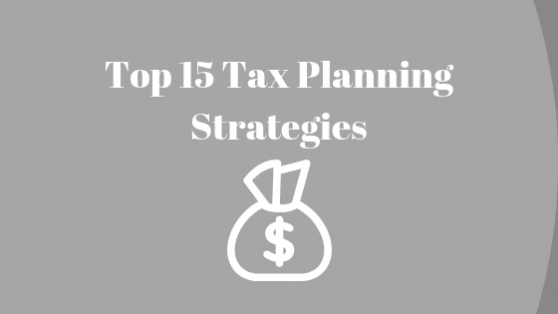Tax planning has become a valuable tool, especially after the Tax Cuts and Jobs Act was signed in December of 2017. The 15 topics discussed below are not in any order of importance but are beneficial for a variety of business owners and individuals.
Business Entity Type
There are pros and cons to each business entity type one can choose when starting a business. As of January 1, 2018, the corporate tax rate is a flat 21%, so corporations might seem more advantageous to some. However, corporations are subject to double taxation. With double taxation, the earnings of the company are taxed at the corporate rate, and distributions to shareholders are taxed as dividends.
For businesses formed as S-Corporations, shareholder loans provide a basis in the entity to deduct business losses. Non-passive income passed through to the shareholders is not subject to Net Investment Income Tax or self-employment tax. However, shareholders must be paid a reasonable compensation. Also, distributions must be pro-rata.
For businesses formed as partnerships, a partner’s basis in the entity is determined by contributions but also guaranteed debt is at risk basis in the entity to deduct business losses. Partnership operating agreements allow for special allocations of income or losses as well as distributions.
Section 179 Deduction
IRC Section 179 allows for the immediate expense of personal property placed into service for business purposes. For the 2018 tax year, businesses may immediately expense up to $1 million of the cost of any IRC §179 property placed in service each tax year.
Bonus Depreciation
Businesses now may elect to expense 100% of the cost of qualified property in the year the property is placed into service (acquired after September 27, 2017). This 100% bonus threshold starts phasing out after five years. Unlike previous years, businesses can now apply bonus depreciation on some qualified used property.
While tax planning, know that you can elect out of 100% bonus while still taking 50% bonus, or you can elect out of bonus entirely depending on your tax situation. It is important to note that certain states do not conform to this specific federal tax law.
Qualified Business Income Deduction
To lessen the tax burden to some businesses after the Domestic Production Activities Deduction was repealed and to keep pass-through investors at a lesser combined tax rate than corporate investors, the IRS enacted a new cashless deduction for the lesser of qualified business income (QBI) or 20% of taxable income.
There are limits on the deduction for specified service trade or business including but not limited to the fields of accounting, health, law, consulting, athletics, financial services, brokerage services, or any business where the principal asset of the business is the reputation or skill of one or more of its employees.
Taxpayers with taxable income below the threshold of $157,500 ($315,00 for married filing joint) will not be subject to this limitation.
Measure and Monitor Business Deductions
Tax planning begins with understanding your financials. As year-end nears, review your numbers with your CPA to accelerate deductions and defer income where possible. Review all accruals and margins for accuracy, including credit card charges. There are some changes enacted with the Tax Cuts and Jobs Act to various fringe benefits including treatment of meals and entertainment paid by an employer.
It is never too early to start tax planning, and choosing a qualified CPA Firm like Rivero, Gordimer & Company is one of the best ways to ensure your taxes are handled properly.
Business Accountable Plan
Employees can no longer deduct unreimbursed business expenses. A Business Accountable Plan is an employee reimbursement arrangement that complies with IRS regulations. Employee expenses reimbursed under an employer’s accountable plan are not treated as income to the employee for federal income tax purposes.
Cost Segregation Study
A Cost Segregation Study is an engineering-based study that allows a real property owner to depreciate a new or existing structure by reallocating real estate building costs to tangible personal property. There are significant tax benefits derived from utilizing shorter recovery periods. Depreciation expense is reallocated for property over 5, 7, and 15 years instead of 39 years for the main structure of the building.
Captive or Re-Insurance Company
Forming a separate small casualty company operates to allow a taxpayer to reduce insurance costs and protect against certain risks. The insured must have the risk of loss and be subject to potential claims for business purposes. Those amounts are paid as premiums to an insurance or third-party company. This tactic could minimize expenses while accessing ample risk distribution and risk shifting.
§179D – Energy-Efficient Commercial Building Deduction
Qualifying building owners and businesses can receive a tax deduction of up to $1.80 per square foot for their energy-efficient buildings placed into service during all open tax years (three years).
Qualifying buildings include retail buildings, office buildings, industrial buildings, apartment buildings (at least four stories), and warehouses. To qualify, the energy-based improvements must be made to the HVAC or interior lighting systems or to the building’s envelope. A third-party firm to must review the building to confirm the deduction.
Employer Credit for Paid Family and Medical Leave (FMLA)
Eligible employers are allowed a general business tax credit for paid family and medical leave. The employer must have a written policy in place that provides at least two weeks of annual paid family and medical leave for full-time employees and a policy for part-time employees.
There are additional requirements, and you should contact a local CPA if you are interested in learning more about FMLA.
Retirement Plan Options
Some of the most overlooked tax planning options are underfunded retirement plans and employees not taking advantage of the retirement plans available to them.
A 401(k) plan defers $18,500 per year, with a $6,000 catch up for employees 50-years old and over. The traditional IRA plan contributions are $5,500, plus a $1,000 catch up if the taxpayer is 50-years old or over. Roth IRAs also incur income limits, but the difference with a Roth IRA is that contributions are not tax-deductible, but withdrawals including interest earned from the account are not taxable upon retirement age.
A Simplified Employee Pension plan, frequently known as a SEP, is set up by the employer, but contributions by the employee are limited to 25% of W-2 wages or $55,000. The employee contribution limit for 2018 is $12,500 per tax year, with a $3,000 catch up for taxpayers age 50 or older.
A Defined Benefit Plan is also known as a cash balance plan. This plan is more complex but allows for greater contributions than other plans. These plans are for the most profitable entities looking to sock away more dollars than other plans allow.
Health Savings Account (HSA)
Through an HSA, the taxpayer can set aside money on a pre-tax basis to pay for qualified medical expenses. An HSA can be used only if you have a High Deductible Health Plan (HDHP). The HSA funds roll over year-to-year if you don’t spend the full amount and interest earned is not taxable. The 2018 contributions have increased to $3,450 for self-only, $6,900 for family coverage.
Estate Planning – Tax or Not
It is important to plan for what happens to your business and other assets if you are no longer with us. You don’t need to have a taxable estate to have an estate plan. Review your estate plan and documents to determine the title of your assets and beneficiaries.
Business succession should be planned out before you retire. If you have a taxable estate (or not), gifts to family members are a way to lower your taxable estate while helping those around you. The annual exclusion from the gift tax is $15,000 per person per year, and there are no gift limits for transfers between spouses.
Children
A 529 plan is a tax-advantaged savings plan designed to encourage saving for future education costs – tuition, mandatory fees, and room and board. Withdrawals made that are used for qualified education expenses are not subject to federal income tax (or qualifying states’ taxes).
Starting in 2018, $10,000 per year per beneficiary of the education saving plan can be used for tuition at any public, private or religious elementary or secondary school.
Consider putting your legal age working children on payroll which will be taxed at their lower tax bracket. Since the standard deduction for single taxpayers is raised to $12,000 in 2018, the first $12,000 of wages would be tax-free for your child. Also, like with spouses, your child can contribute to a retirement account so that you reduce your business income but also plan for the future.
Noncash Charitable Contributions
When donating noncash charitable items, determining the charitable value is key. The amount of a donated tangible property deduction is generally fair market value. Other rules do apply, so it’s wise to consult a certified public accountant for further clarifications.
A conservation easement is a voluntary legal agreement between a landowner and a land trust or government agency that permanently limits uses of the land to protect its conservation values. The donation amount is the fair market value before grant less the fair market value after the grant.
Contemporaneous written acknowledgment is needed for donation values of over $250 and should be received by the earlier of the filing date or due date (includes extensions).
The article above was written by Kim Cardenas, CPA, and Mike Helton, CPA.
Need More Help with Tax Planning Strategies?
Rivero, Gordimer & Company is an experienced CPA Firm in Tampa, Florida. Our tax team has decades of experience working across many industries, and we are ready to help you with your tax planning and preparation.




